This article needs additional citations for verification .(November 2013) |

A boilersuit (or boiler suit), also known as coveralls, is a loose fitting garment covering the whole body except for the head, hands and feet.
This article needs additional citations for verification .(November 2013) |

A boilersuit (or boiler suit), also known as coveralls, is a loose fitting garment covering the whole body except for the head, hands and feet.
The term boilersuit is most common in the UK, where the 1989 edition of the Oxford English Dictionary lists the word as having been first used on 28 October 1928 in the Sunday Express newspaper. The garments are typically known as coveralls in North America, while overall(s) is used elsewhere.[ citation needed ] In North America "overall" is more usually understood as a bib-and-brace overall, which is a type of trousers with attached suspenders.
A more tight-fitting garment that is otherwise similar to a boilersuit is usually called a jumpsuit. The "siren suit" favoured by Winston Churchill (but also worn by many others in the UK when air raids were a threat) during the Second World War was closely similar to a boilersuit.

A boilersuit is a one-piece garment with full-length sleeves and legs like a jumpsuit, but usually less tight-fitting. Its main feature is that it has no gap between jacket and trousers or between lapels, and no loose jacket tails. It often has a long thin pocket down the outside of the right thigh to hold long tools. It usually has a front fastening extending the whole length of the front of the body up to the throat, with no lapels. It may be fastened with buttons, a zip, velcro, or snap fasteners. Boilersuits with an attached hood are available. The word "boilersuit" may also refer to disposable garments such as DuPont's Tyvek suits.
Coveralls are most often worn as protective clothing over "street" clothes at work. They can be used for painting and decorating, mechanical work, farming, factory work, and other activities where clothes may become soiled. Many companies provide workers with corporate branded boilersuits for identification and marketing.
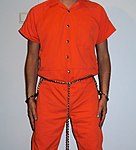
Coveralls are also sometimes used as prison uniforms in the U.S and other countries.

Police tactical units often use boilersuits as a uniform, for instance the French police unit Compagnies Républicaines de Sécurité, and the Austrian units EKO Cobra and WEGA. Similar coveralls made of Nomex in olive drab (and more recently, desert tan) are also used by the crews of armoured fighting vehicles in the US Army and Marine Corps, where the men and also their suits are sometimes called "CVCs", an abbreviation of "Combat Vehicle Crewman". [1]
More form fitting coveralls with many zippered pockets, originally made of cotton treated for flame resistance, but made of Nomex since the late 1960s, have been used as flight suits since the beginning of World War II. There are two main categories for coveralls: cloth and disposable. [2]
Both cloth and disposable coveralls are manufactured with their own unique protective properties including: high-visibility, insulation to protect against cold weather, waterproof, flame resistant to protect against fire, arc resistant to protect against flash fires, and even microporous fabrics when exposed to hazardous chemicals. [3]
Japanese politicians have been known to use boiler suits to convey an image of preparedness. [4]
Coveralls called student boilersuits are used by university students in some Nordic countries as a sort of party-uniform, with insignia on the back and colour varying with programme and university.
The suit is associated with the slasher subgenre, being worn by Michael Myers of the Halloween films.
Pete Townshend of The Who frequently wore a white boiler suit during performances and in publicity photographs from 1969-71. [5]
The Church of Scientology has punished Sea Org members in the Rehabilitation Project Force by making them wear black boiler suits. [6]
A suit is a set of garments with matching pieces, typically a jacket and trousers.
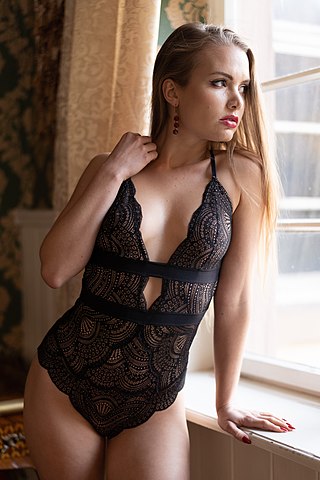
A bodysuit is a one-piece form-fitting or skin-tight garment that covers the torso and the crotch, and sometimes the legs, hands, and feet, and cannot be used as a swimsuit. The style of a basic bodysuit is similar to a one-piece swimsuit and a leotard, though the materials may vary. A bodysuit, unlike a swimsuit or leotard, has snaps, hooks or velcro at the crotch. Thong or T-front thong bodysuits usually have the crotch opening moved up to the front to underbelly area to increase the wearer's comfort. A bodysuit may have sleeves and varying shoulder strap and collar styles. Bodysuits can be made from a number of fabrics, including cotton, lace, nylon, etc. In general, textile bodysuits include expandable fiber such as spandex for a better fit to the shape of the body.
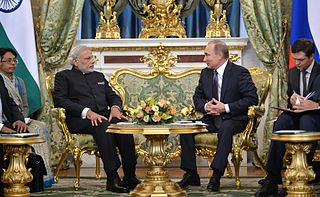
A suit, lounge suit, or business suit is a set of clothes comprising a suit jacket and trousers of identical textiles worn with a collared dress shirt, necktie, and dress shoes. A skirt suit is similar, but with a matching skirt instead of trousers. It is considered informal wear in Western dress codes. The lounge suit originated in 19th-century Britain as a more casual alternative for sportswear and British country clothing, with roots in early modern Western Europe. After replacing the black frock coat in the early 20th century as regular daywear, a sober one-colored suit became known as a lounge suit.

A jacket is a garment for the upper body, usually extending below the hips. A jacket typically has sleeves, and fastens in the front or slightly on the side. A jacket is generally lighter, tighter-fitting, and less insulating than a coat, which is outerwear. Some jackets are fashionable, while others serve as protective clothing. Jackets without sleeves are vests.

A jumpsuit is a one-piece garment with sleeves and legs and typically without integral coverings for feet, hands or head. The original jump suit is the functional one-piece garment used by parachutists.

Gabardine is a durable twill worsted wool, a tightly woven fabric originally waterproof and used to make suits, overcoats, trousers, uniforms, windbreakers, outerwear and other garments.

A frock coat is a formal men's coat characterised by a knee-length skirt cut all around the base just above the knee, popular during the Victorian and Edwardian periods (1830s–1910s). It is a fitted, long-sleeved coat with a centre vent at the back and some features unusual in post-Victorian dress. These include the reverse collar and lapels, where the outer edge of the lapel is often cut from a separate piece of cloth from the main body and also a high degree of waist suppression around the waistcoat, where the coat's diameter round the waist is less than round the chest. This is achieved by a high horizontal waist seam with side bodies, which are extra panels of fabric above the waist used to pull in the naturally cylindrical drape. As was usual with all coats in the 19th century, shoulder padding was rare or minimal.

A flight suit is a full-body garment, worn while flying aircraft such as military airplanes, gliders and helicopters. These suits are generally made to keep the wearer warm, as well as being practical, and durable. Its appearance is usually similar to a jumpsuit. A military flight suit may also show rank insignia. It is sometimes used as a combat uniform in close quarters battle or visit, board, search, and seizure situations, for its practicality.
Oilskin is a waterproof cloth used for making garments typically worn by sailors and by others in wet areas. The modern oilskin garment was developed by a New Zealander, Edward Le Roy, in 1898. Le Roy used worn-out sailcloth painted with a mixture of linseed oil and wax to produce a waterproof garment suitable to be worn on deck in foul-weather conditions. Oilskins are part of the range of protective clothing also known as foul weather gear.

A hazmat suit is a piece of personal protective equipment that consists of an impermeable whole-body garment worn as protection against hazardous materials. Such suits are often combined with self-contained breathing apparatus (SCBA) to ensure a supply of breathable air. Hazmat suits are used by firefighters, emergency medical technicians, paramedics, researchers, personnel responding to toxic spills, specialists cleaning up contaminated facilities, and workers in toxic environments.
The United States Army in World War II used a variety of standard and non-standard dress and battle uniforms, which often changed depending upon the theater of war, climatic environment, and supply exigencies.

The uniforms of the United States Navy include dress uniforms, daily service uniforms, working uniforms, and uniforms for special situations, which have varied throughout the history of the navy. For simplicity in this article, officers refers to both commissioned officers and warrant officers.

Lapels are the folded flaps of cloth on the front of a jacket or coat below the collar and are most commonly found on formal clothing and suit jackets. Usually they are formed by folding over the front edges of the jacket or coat and sewing them to the collar, an extra piece of fabric around the back of the neck.

Bunker gear is the personal protective equipment (PPE) used by firefighters. The term is derived from the fact that the trousers and boots are traditionally kept by the firefighter's bunk at the fire station to be readily available for use.
The Jacket, Field, O.D. is a field jacket that was used by US Army soldiers, most famously during the beginning of World War II. In 1941 it started to be phased in as a replacement for the wool four-pocket service coat of World War I, but around 1943 it was replaced in turn by the improved M1943 model. Owing to wide adoption, the M1941 is usually recognized as a symbol of the World War II American G.I. The jacket was made in a light shade of olive drab called O.D. number 2.

The Afghanka is a type of military uniform system developed and issued by the Soviet Army in the early 1980s, still in use today in some Post-Soviet states in many different variants. The name Afghanka is an unofficial popular slang term in Russian for the uniform, derived from its prolific use during the Soviet–Afghan War. All the non-sand coloured versions of the M88 are not called Afghanka.
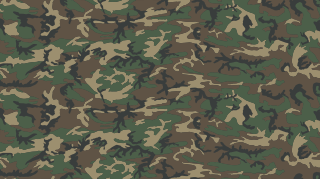
The ERDL pattern, also known as the Leaf pattern, is a camouflage pattern developed by the United States Army at its Engineer Research & Development Laboratories (ERDL) in 1948. It was not used until the Vietnam War, when it was issued to elite reconnaissance and special operations units beginning early 1967.

Scrubs are the sanitary clothing worn by physicians, nurses, dentists and other workers involved in patient care. Originally designed for use by surgeons and other operating room personnel, who would put them on when sterilizing themselves, or "scrubbing in", before surgery, they are now worn by many hospital personnel.
A man's suit of clothes, in the sense of a lounge or business or office suit, is a set of garments which are crafted from the same cloth. This article discusses the history of the lounge suit, often called a business suit when featuring dark colors and a conservative cut.
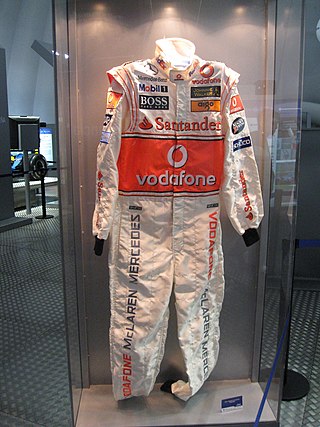
A racing suit or racing overalls, often referred to as a fire suit due to its fire retardant properties, is clothing such as overalls worn in various forms of auto racing by racing drivers, crew members who work on the vehicles during races, track safety workers or marshals, and in some series commentators at the event.
{{cite web}}: CS1 maint: archived copy as title (link)